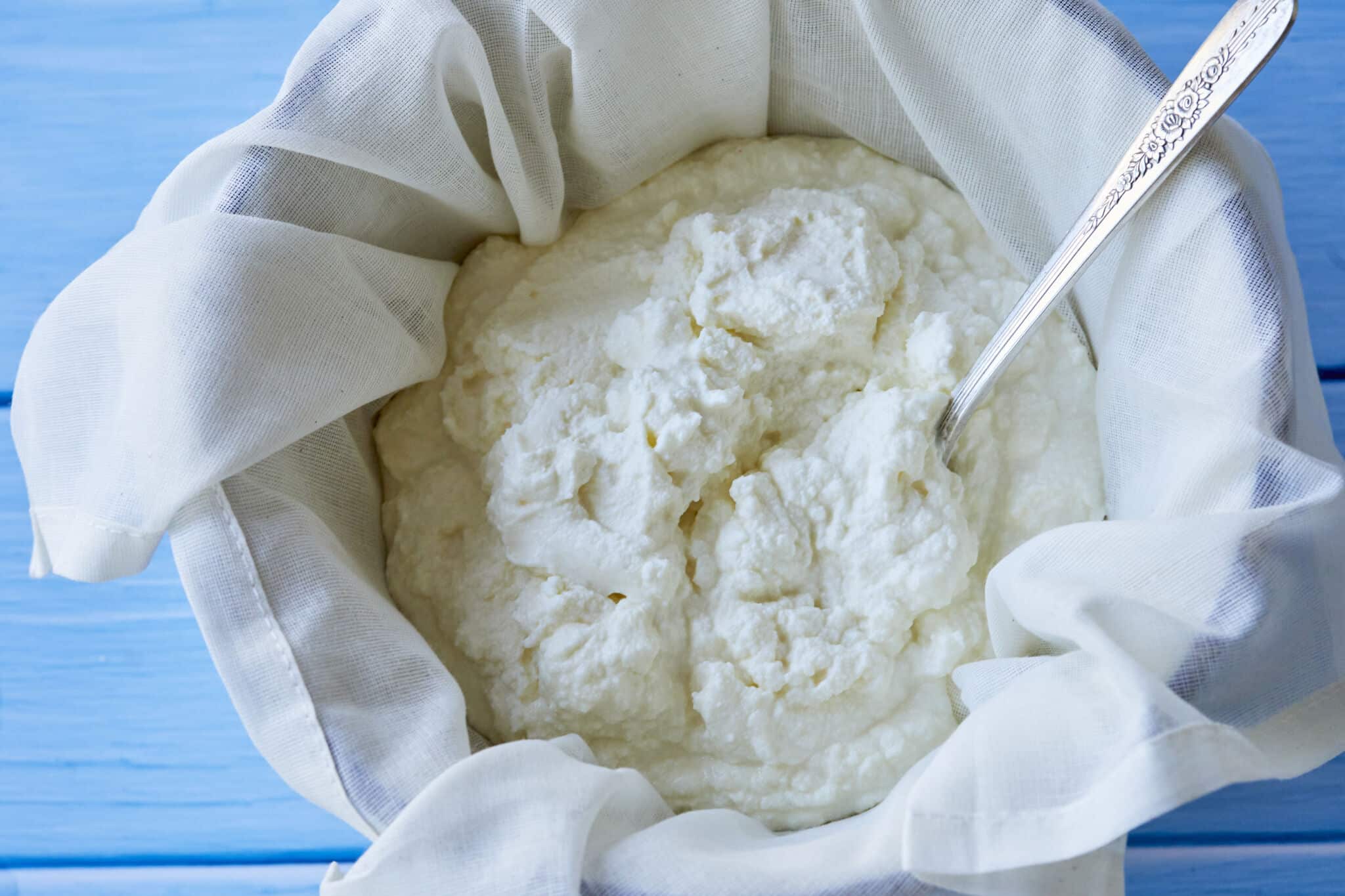
This post may contain affiliate links. Please see my full disclosure for details.
Hi Bold Bakers!
WHY YOU’LL LOVE THIS RECIPE: This How to Make Ricotta Cheese recipe is one of the most popular Bold Baking Basics to date. Who knew making creamy, rich ricotta cheese at home could be so easy? All you need is milk, cream, and some lemon juice to make it!
There are countless sweet and savory recipes this cheese can be used for, too, from topping pizzas and lasagna, to classic cannoli and Italian gelato (and don’t forget — my new 2 Ingredient Pasta Recipe that can be made without a machine!). Ricotta cheese is a wonderful blank canvas and an impressive ingredient to make from scratch! Get ready to show off!
Table Of Contents
- What is Ricotta Cheese?
- What Does it Taste Like and What Food is Ricotta Used For?
- Tools You Need
- Ricotta Cheese Ingredients
- How to Make Ricotta Cheese
- How to Store Ricotta Cheese
- What is the Difference Between Ricotta and Other Cheeses?
- Ricotta Cheese FAQs
- Gemma’s Pro Chef Tips
- Related Recipes
What is Ricotta Cheese?
Ricotta (“recooked” or “refined” in Italian) is an Italian whey cheese made from milk leftover whey by coagulating the remained proteins from producing other cheeses (in which casein has been used).
Even though not necessarily low in carbohydrates, ricotta is a great source of calcium and protein, rich in potassium, and relatively low in sodium, cholesterol, saturated fat and calories.
Traditionally, ricotta protein is acidified by additional fermentation at room temperature for 12-24 hours then heated near boiling point to form curds. My easy homemade Ricotta Cheese recipe only entails the heat from a common household stovetop and acid from freshly squeezed lemon juice, then drain and squeeze to yield fresh ricotta swiftly!
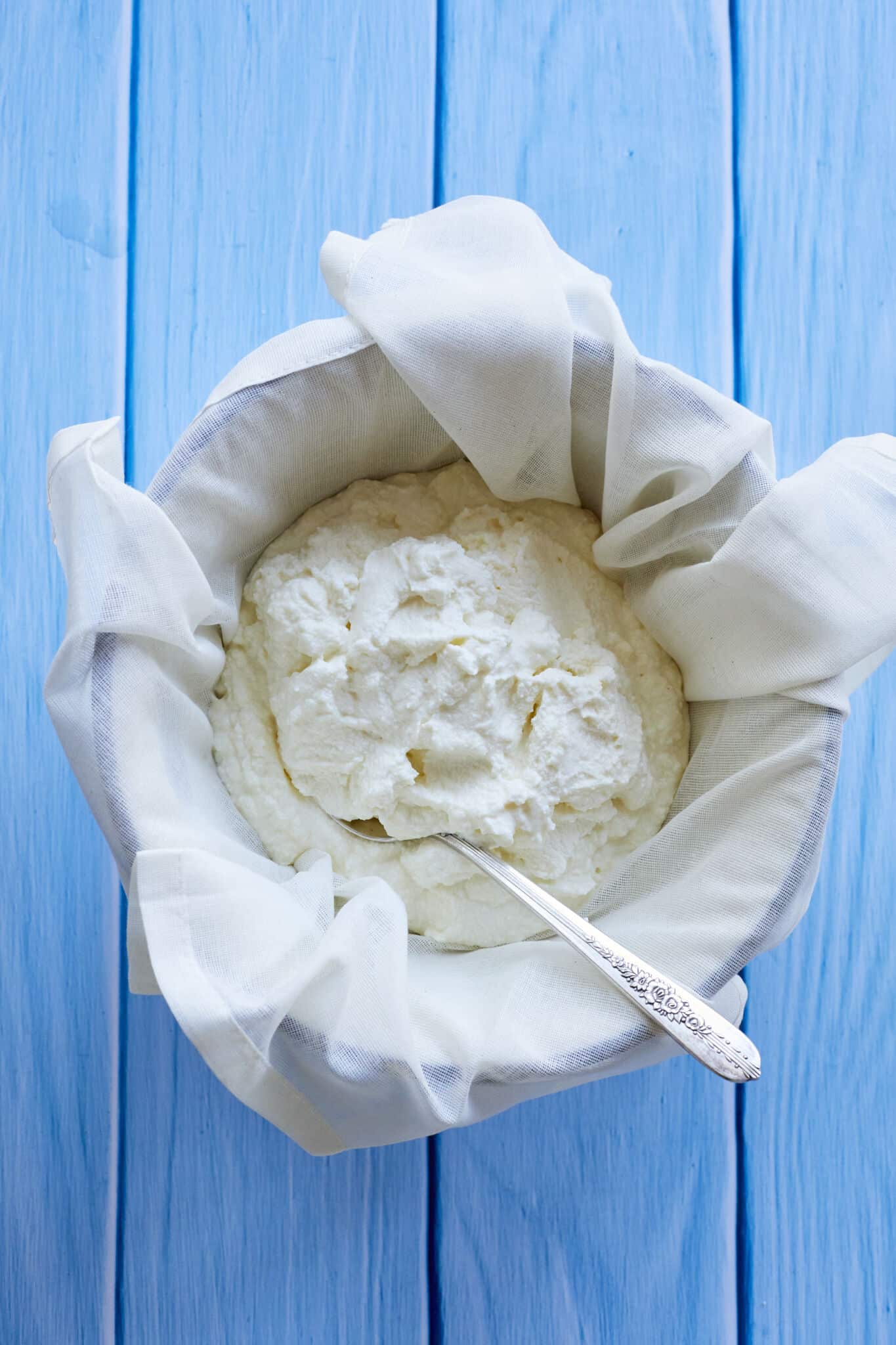
What Does it Taste Like and What Food is Ricotta Used For?
Ricotta cheese is white in appearance, creamy, and spreadable in texture, making it perfect for flavoring. I like to spike my ricotta with lemon and herbs and dollop it on top of my Homemade Pizza Recipe. The ricotta can just as easily be sweetened with honey or sugar and added to things like cakes, cheesecakes, and custards. The versatility of Ricotta Cheese makes it so great to have on hand, which goes really well with dishes like my 2 Ingredient Homemade Pasta (Without a Machine) and creates the easiest Homemade Ricotta Gnocchi or even satisfying savory Mushroom Galette Recipe!
Tools You Need
- Large strainer, sieve or colander
- Cheesecloth or thin tea towel
- Wooden spoon or spatula
- Medium Saucepan
Ricotta Cheese Ingredients
- Whole milk: Whole milk is not only rich in flavor but also high in protein to yield more curds than skim milk in cheese making.
- Heavy cream: Heavy cream makes Ricotta Cheese soft and cream.
- Fresh lemon juice: Fresh lemon juice (or white vinegar) provides acid to coagulate protein to form curds. (Freeze lemon zest for other baking uses.)
- Salt: Salt enhances all the flavors of Ricotta Cheese (and everything!)
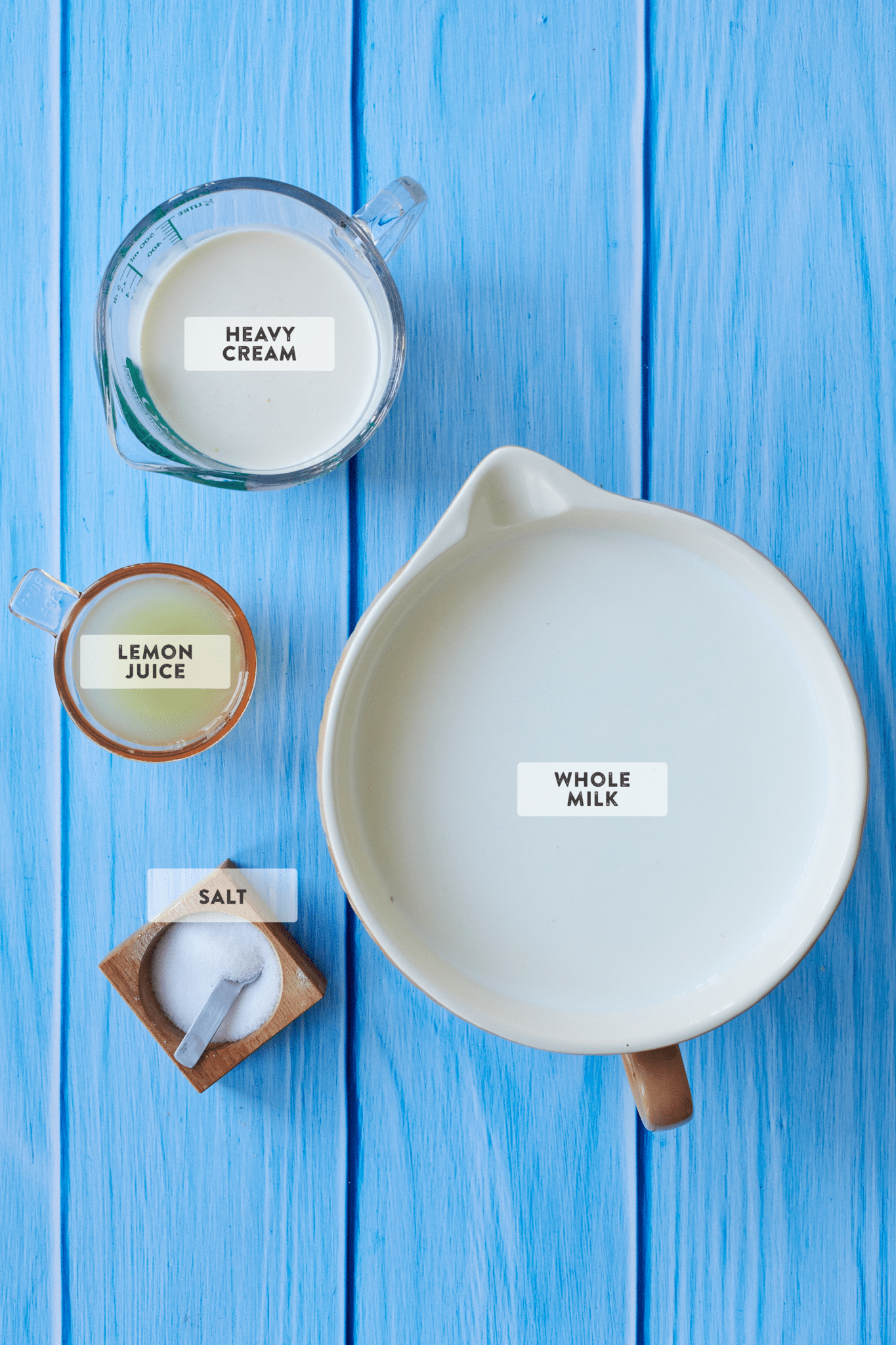
How to Make Ricotta Cheese
- Prepare a large bowl with a sieve lined with cheesecloth or a thin tea towel.
- In a large pot (or heavy bottom saucepan) over medium heat, bring the mixture of milk, cream, and salt to a simmer. Then stir in the lemon juice.
- Constantly stir over low heat until the mixture fully curdles resembling watery cottage cheese.
- Lift out curds with a slotted spoon or pour them over the prepared sieve and drain at room temperature for about 1 hour then gently squeeze to release any excess *whey ( a bonus that store-bought ricotta cheese has none to little!).
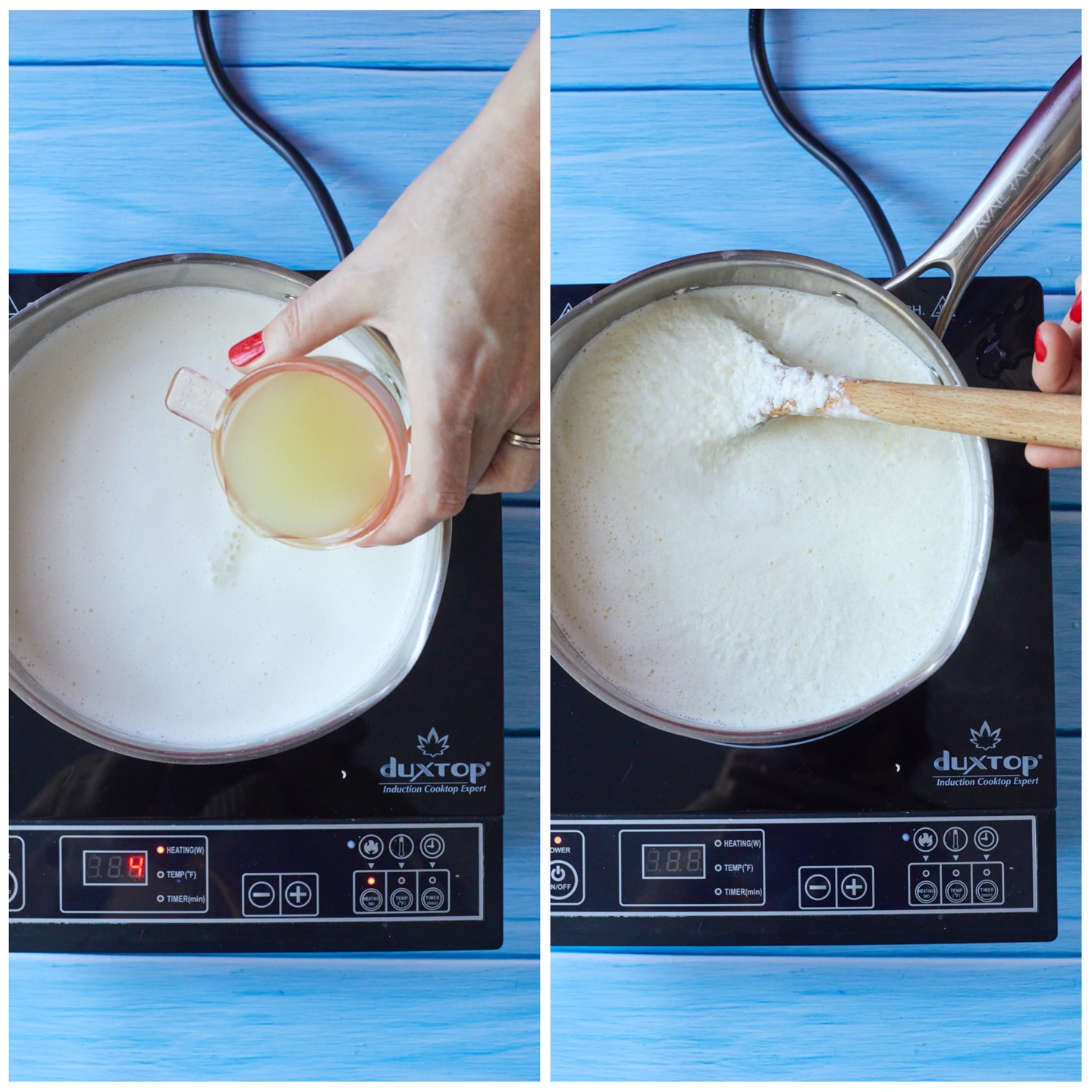
How to Store Ricotta Cheese?
Cover and store this homemade ricotta cheese in an airtight container in the fridge for up to 3-4 days.
What is the Difference Between Ricotta and Other Cheeses?
In short, they mostly differ in the last step of production and presence.
Ricotta Cheese is non-aged or aged with whey strained out; Cream Cheese is strained curds that have to be processed until smooth; Cottage cheese is loose curds with whey; Paneer is non-aged curds that have to be pressed.
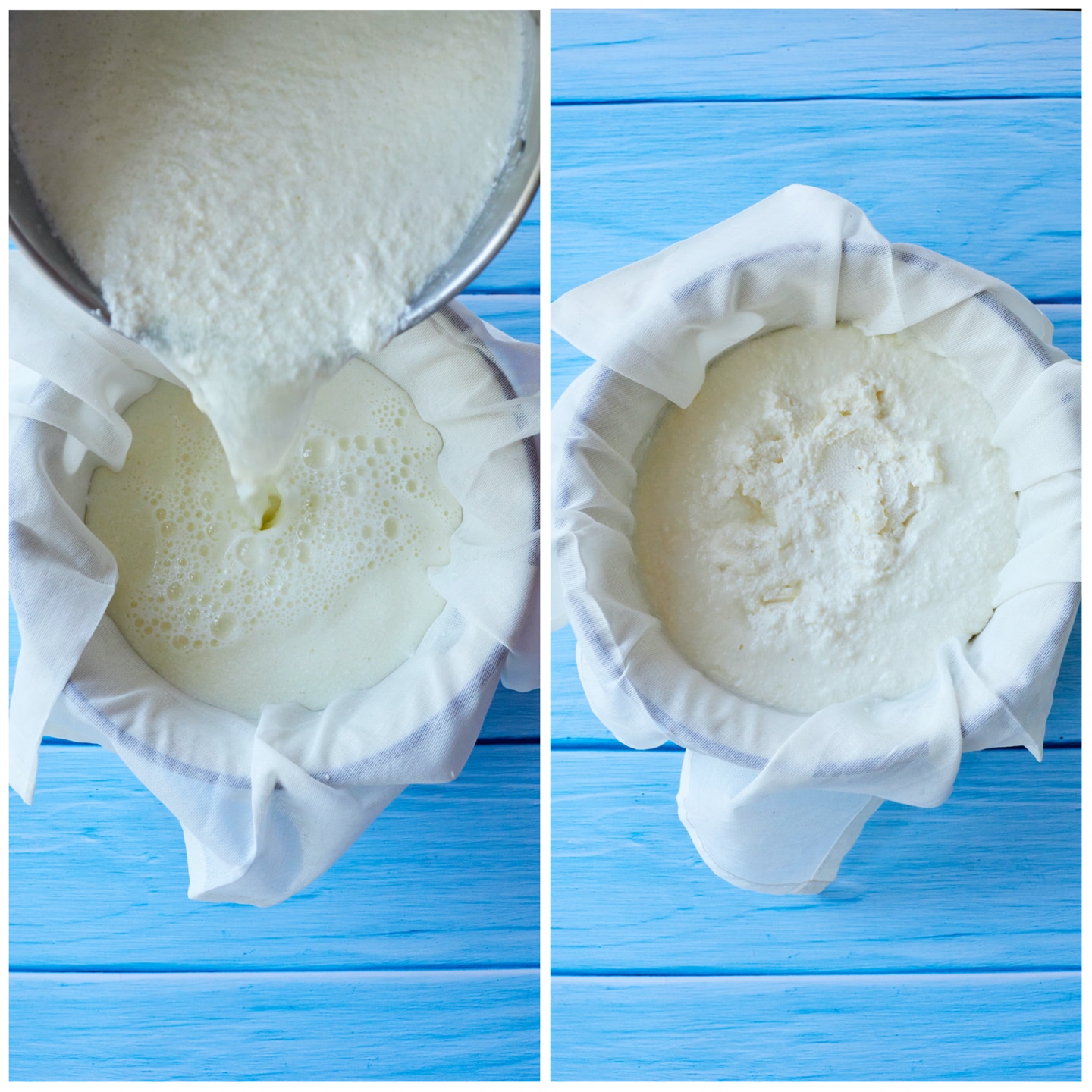
Ricotta Cheese FAQs
Why Won’t My Ricotta Curdle?
To make the ricotta, you simply bring cream, milk, and salt to a simmer then introduce an acid to make the mixture curdle. The curds that separate are what become the ricotta cheese and the remaining liquid gets strained away. If your cheese doesn’t curdle right after adding in the lemon juice, be patient and keep on stirring with a wooden spoon.
If after 1 or 2 minutes you only see small grainy bits, go ahead and add more lemon juice 1 tablespoon at a time. This extra acid along with the heat will provide you with nice large curdles.
My Ricotta is Too Runny, What Happened?
After allowing the ricotta to drain on the countertop for about an hour, I like to bring the cheesecloth and lightly twist it together, closing up the ricotta. This not only brings the cheese into a nice ball shape, but it allows me to ring out any additional liquid that might not have drained off. This is the secret to a smooth, yet thick ricotta. As long as you don’t skip this step, you should not have runny ricotta.
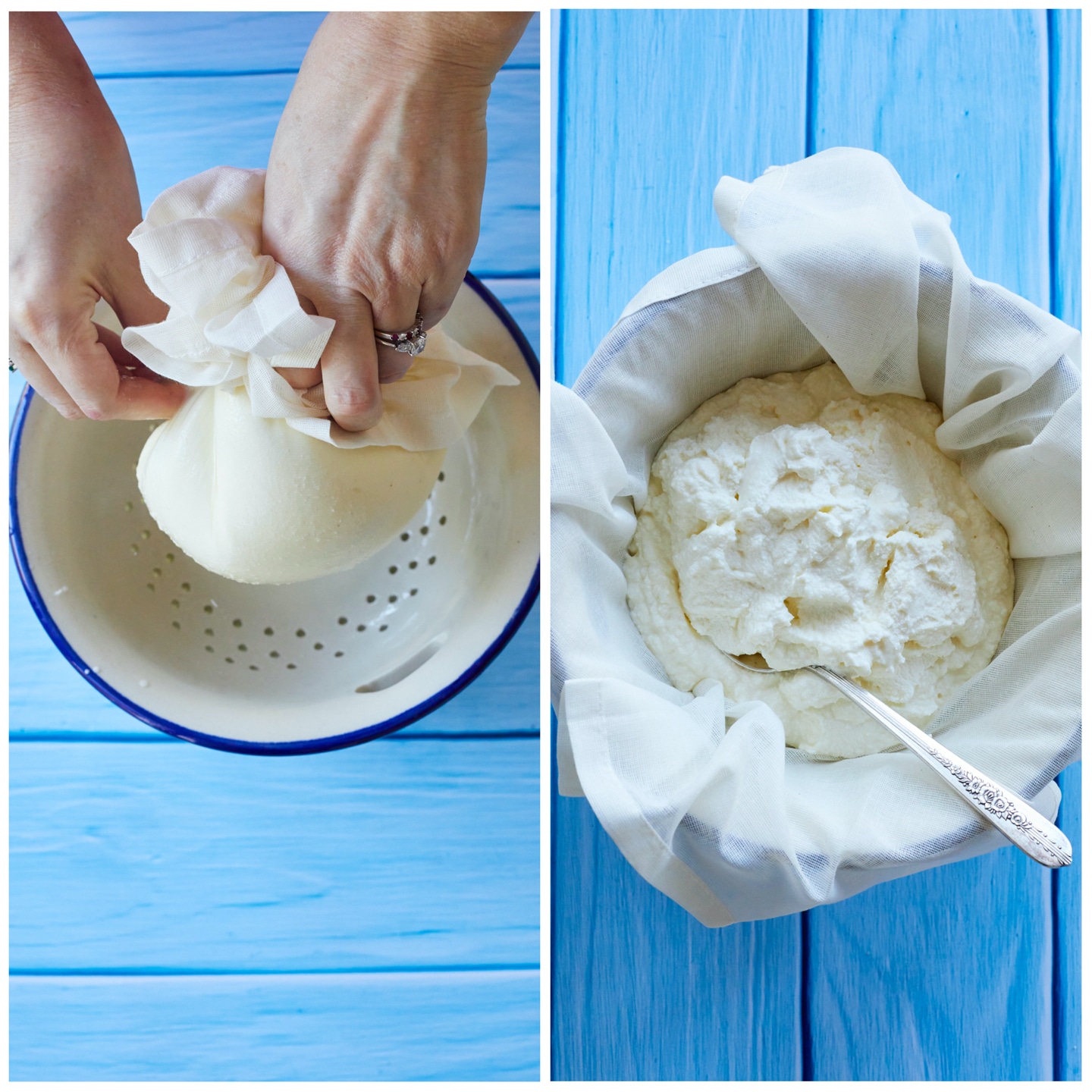
Gemma’s Pro Chef Tips
- *Whey is a by-product of cheese making. It is the liquid that remains after separating the curds. It should always be saved and added in place of buttermilk or milk in baking. For this reason, I always save my whey because nothing should go to waste! If you don’t think you will use it straight away then pop it in a labeled tub and into the freezer.
- Freeze Ricotta Cheese for using at a later date. To do so, freeze the cheese in an airtight container and just allow to thaw at room temperature before using. However, in my honest opinion, you get the best results when you use it straight away without freezing.
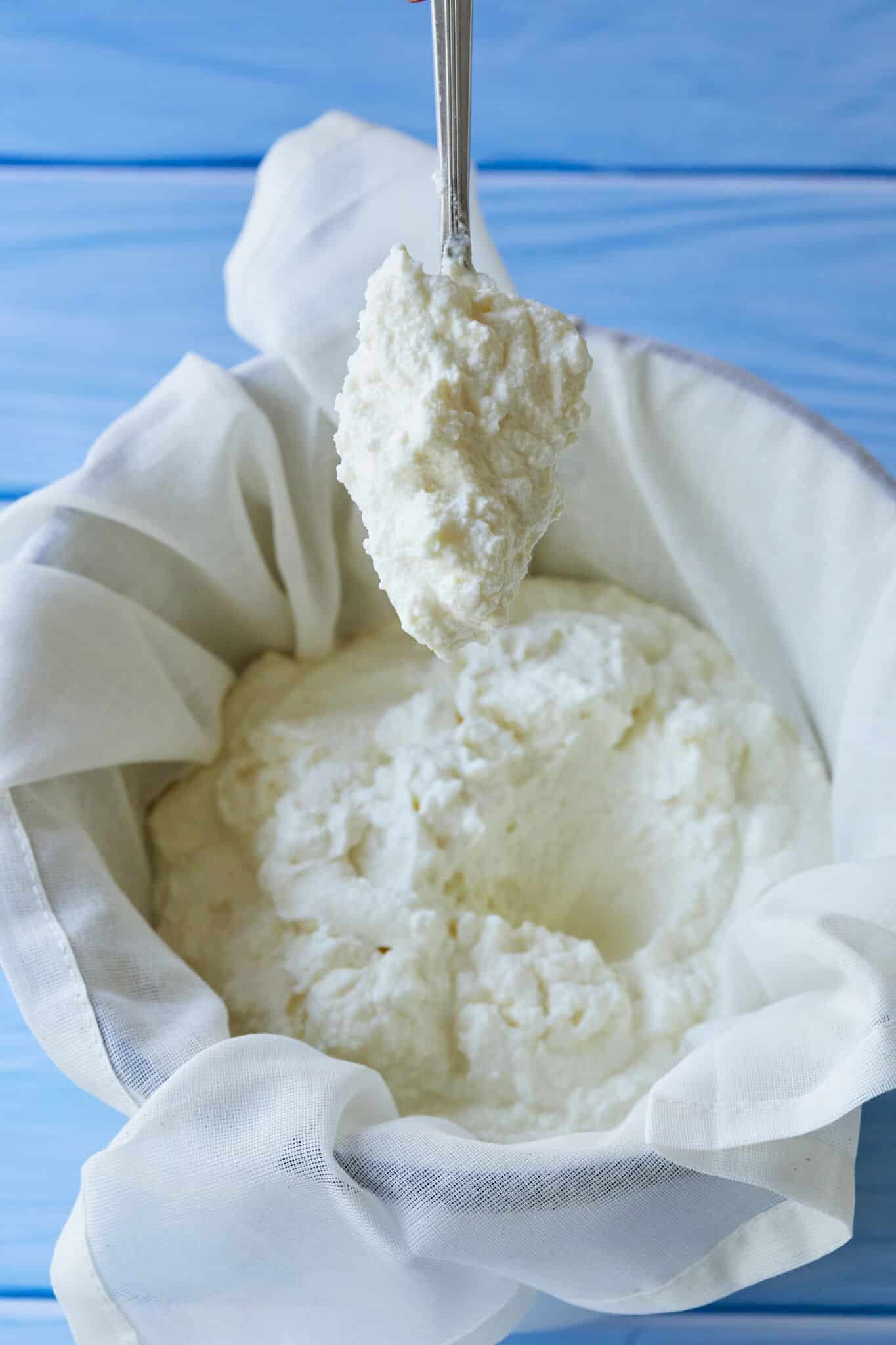
Related Recipes
- Homemade Ricotta Gnocchi
- Italian Ricotta Cake With Plums
- Microwave Lasagna In A Mug
- Italian Ricotta Cookies With Christmas Sprinkles
- Spinach And Ricotta Pop-Tarts
Get More Great Bold Baking Basics!
- The Best Lasagna Recipe (100% From Scratch!)
- Homemade Cream Cheese
- Homemade Sour Cream
- Homemade Mascarpone Cheese
- Homemade Butter
And don’t forget to follow Bigger Bolder Baking on Pinterest!
Watch The Recipe Video!
How to Make Ricotta Cheese
Ingredients
- 2 quarts (4 pints) whole milk
- 1 cup (8 oz/225 ml) heavy cream
- ½ teaspoon salt
- 5 tablespoons lemon juice, freshly squeezed
Instructions
- Line a large strainer or sieve with a layer of cheesecloth or thin tea towel. Place the lined sieve over a large bowl, set aside.
- In a medium saucepan over medium heat combine the milk, cream and salt.
- When the cream and milk mixture comes to a simmer stir in the lemon juice.
- Turn the heat down to low and stir constantly with a wooden spoon until the mixture curdles. Once fully curdled it should look like watery cottage cheese. Remove from the heat.
- Pour the curdled mixture into the sieve and allow to drain at room temperature for about 1 hour.
- After 1 hour, gently squeeze the cheesecloth around the ricotta releasing any excess *whey. Feel free to enjoy this warm at this point or transfer the sieve and bowl to the fridge and allow the ricotta to set and chill until you're ready to use it.
- Cover and store the cheese in an airtight container in the fridge for up to 3-4 days. Now you have ricotta what do you do with it, well you can put it on pizzas, canolis or you can even pair it with my homemade pasta.
Recipe Notes
- * Whey is a by-product of cheese making. Save the whey that has drained off the ricotta and use it for baking or cooking in place of milk or buttermilk.

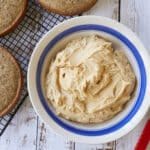
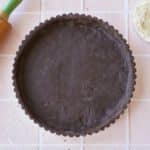
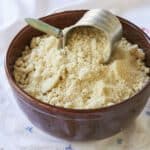
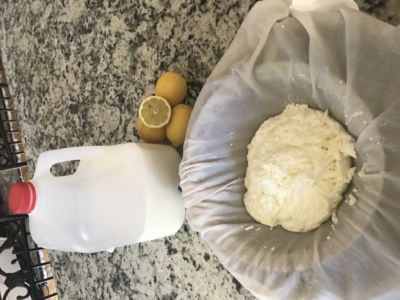
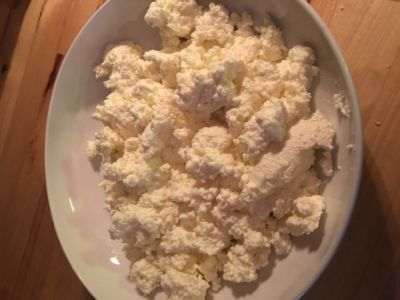
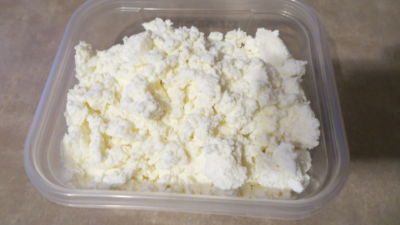
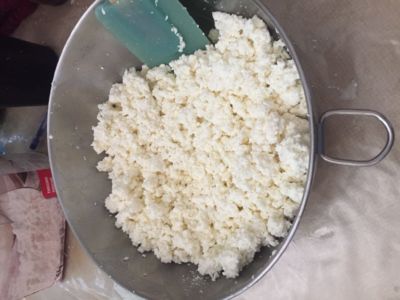
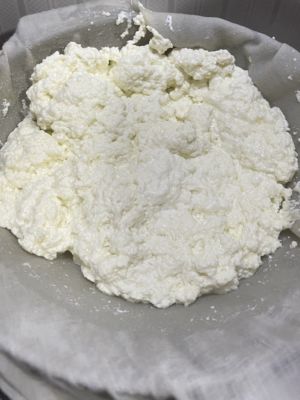
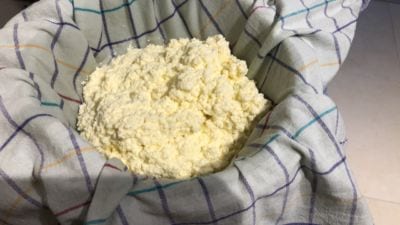



Worked like magic!!! I am going to use this to make my homemade lasagna which I already made the pasta dough yesterday and let it set wrapped in plastic wrap. I’ve made my homemade sauce already and now I just have to roll out of pasta into sheets and par boil them then I shall assemble my lasagna!
We made this ricotta recipe today for our lasagne, and we loved it!! The ricotta was so so easy to make and it was so good! We just salted, peppered, parsleyed, basiled, and Italian seasoned it before putting it into the lasagne and it was amaaazzinngg! We made two batches because we needed so much for the lasagne. The first batch we used 3.25% fat milk, 10% table cream, and fresh squeezed lemon juice, and it worked like a dream!! For the second batch we used the same dairy but we ran out of lemon juice and had to use… Read more »
Just a quick note on one reason you may not get curds: You can’t use ultra pasteurized milk; it will not create curds.
Hi Gemma I am from Austraila and sorry if this sounds like a dumb question but
could you please tell me how much 2 quarts of milk is in cups, Litres or Millimetres please.
Mine didn’t curdle at all, so I just decided to make buttermilk pancakes out of the concoction. I actually threw in an additional pinch of baking soda just to make sure that the pancakes wouldn’t taste too sour. My mother commented with amazement that the pancakes tasted a bit like berries. She kept asking me what I did to it (a few days prior, she and my dad had made some pancakes out of a box mix). LOL! I also made a kind of experiment. I wanted to know how any acidic ingredient tasted when baking soda is added. So… Read more »
I love your recipes! I only wish you would stick to ml liquid quantities. In one recipe you employ pint, quartz, Oz, when really ml, liter or cup will do and neither is region specific.
Hello. I’m surprised that the Ricotta cheese recipe uses whole milk and cream, for I believe it’s usually made with the whey, byproduct of other white cheese (hence the ricotta name), or low fat milk…
Why is this recipe different?
This was an epic fail. I think because we could only find ultra-pasterized heavy cream. But after an hour of taking turns stirring, my sister and I gave up on getting the milk to curdle. More lemon juice and even vinegar didnt get a single curd. Wish that there were notes about the ultrapasterized in this recipe – only by chance found that note in another.
Hi im in Australia what is 4 quarts/pints of milk in grams please we do not use them here thank you
And will your BIGGER BOLDER BAKING BOOK be coming to Australia
Help! The grocery store was out of Ricotta and I needed some for a baked spaghetti recipe I was making for a large crowd. I remembered that you had a recipe for homemade Ricotta on your web site so instead of running to another store, I decided to make my own. I read the recipe, watched the video, and went to work. My attempt was an Epic Fail! And I do mean Epic. I followed your recipe to the letter and my whole milk and cream would absolutely not curdle. I raised the temperature, lowered the temperature, added more fresh… Read more »